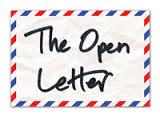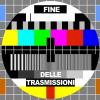Dear Publishers,
Now that you have your ‘agency’ contracts (such as they are) in place and are moving on, in your own heads anyway, to Ebook 2.0, can we please start tightening things up a little with some standards?
Customers need to know that they can have a reliable, consistent experience in getting the content they want to pay you their hard-earned money for (and at over 1 billion downloads, the iTunes music store has proven people will pay for their content!) They don’t have that now, and it needs to happen fast. Here are the first two areas you should work on.
1) Pricing
Yes, yes, I know, you have the whole agency thing going on. But only for books not from Random House. Or from independent publishers. Or being sold by ebook vendors outside the USA (if you don’t believe me, compare the prices at Kobo and Amazon!)
And only from readers who are not affected by sales tax (state taxes for Americans, VAT for the Brits, GST for Canadians—and that will go up soon when the business-friendly, customer-hostile harmonized sales tax kicks in this July…) The list of exceptions goes on and on, and in the confusion, readers are snapping shut their wallets and feeling betrayed and confused.
If you really did follow your rules and have a standardized pricing scheme—X for a new release, Y for a best-seller, and a Z% discount on the lowest paper price for everything else, or however you want to set it up—then customers would be a lot happier, and happier customers buy more stuff.
I could cite a hundred examples here of stories I’ve heard this week from the customer frontlines, but instead I will offer you just one, of a book I was watching on Kobo over several days. It started at $11.99. A day later, it was $10.99. Then up to 12-something. Then down to $9.99 when viewed from my save list and $15+ when viewed from the general search results.
Finally, I tried to buy it (at $9.99, off my save list) and was told that the book was now geographically restricted and I couldn’t buy it at ANY price. To paraphrase Dr. Phil: What the heck are you thinking?
2) Formats
I have been using three readers this week: Kindle, for most of my commercial content. Kobo, while I put my tester unit through its paces. And the Aluratek Libre, which I picked up with a gift card as a spare reader for some of my personal content. I still am not sure I will keep it, given the headaches I’m having getting files to present at all attractively, as my experiences below will show…
Let’s take a few sample files. First, a hand-formatted, lovingly edited beautiful epub file from Mobile Read. On the Kindle, it converts very well to mobipocket. No issues. But on the Kobo: loads fine, complete with table of contents and beautiful cover art. But the font is teeny tiny and all attempts to zoom are in vain.
I email the creator of the file. He can think of no reason why it shouldn’t work normally. There is no code in it that specifies a font size and no DRM or other restrictions. I load some other files this guy made and several of them do display correctly and allow font changes. It seems completely random that this one will not. My contact at Kobo tells me this is an Adobe issue and they are hoping to address it with some firmware tinkering, preferably before the device hits retail.
As for the Libre, everything looks fine—except that the Libre uses a different font for epub than for other formats, it is a less attractive font, and for some reason the page-turning buttons on the right side of the device don’t work when reading epub files. Why on earth anybody would program such a random and pointless restriction into their firmware baffles me.
Why would anyone would care if the user presses buttons on the right side or the left side? Why would they care enough to specifically program around such a restriction? And only for one of the supported file formats but not for the others?
File number 2: some personal Word documents, saved to HTML for easy importing into Calibre. They looked fine on my old Sony, but when I converted them to mobipocket for the Kindle, they looked terrible.
I copied all the text into the clipboard, pasted into a new, clean file and used a plain text editor to strip out all the code before I re-saved it. There were many files, so this took a long time, but those files are pristine now and converted beautifully to mobipocket. They looked fine as epubs on the Kobo and Libre too (although of course on the Libre, I had to use the left-hander buttons even though I am not left-handed…)
But how did the mobipocket files look on the Libre? No line breaks at all. Everything just ran together in a big, messy blur. Native mobipocket files looked fine—multiformat books from Fictionwise, for example—but any mobipocket I made myself had no line breaks to speak of. But why did they look fine on the Kindle then?
A reader needs to know that the file they buy today will still be readable tomorrow. I know very little about computer programming and what might be going on behind the scenes with the no-line-breaks mobipocket files (or why they display fine on one device and not so fine on the other) and why the right-handed page turn buttons on the Libre work with some file types and not others.
But I know a fair amount about being a customer, and I know it shouldn’t be this hard. If I have to convert all those files again—and potentially, for future devices, again and again and again and again—that will be a disincentive to me to buy any new devices. An epub should be an epub. A mobi should be a mobi. I should be able to plug and play here. Why does it have to be this hard?
So, allowing for cosmetic and aesthetic tinkering by vendors both of product offerings and product content, and allowing that both ‘sides’ accept that readers are willing to pay for content and that there is money to be made—can we start standardizing some of these behind the scenes techie issues so that we all are working on the same platform here and we can take those issues off the table and spend those brain cells focusing on getting out more product and on innovating the ways customers can use it?
Can we start—soon—to expect a reasonably consistent environment where customers feel comfortable buying easy to use and predictably priced and delivered media?
Thank you and sincerely,
Joanna, a concerned reader
















